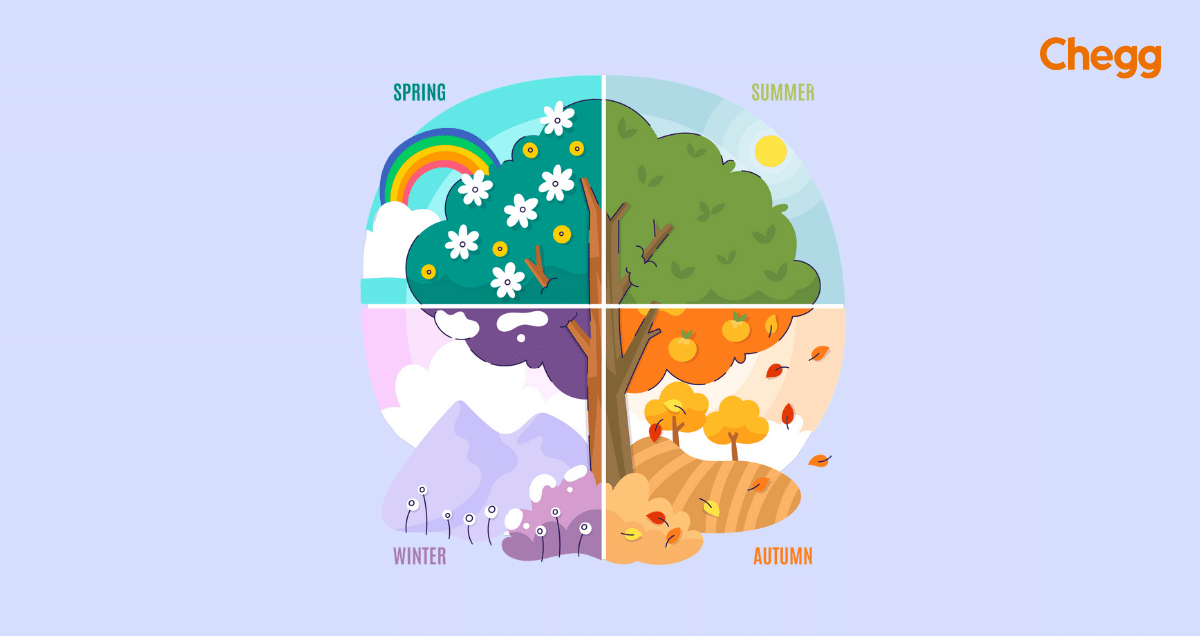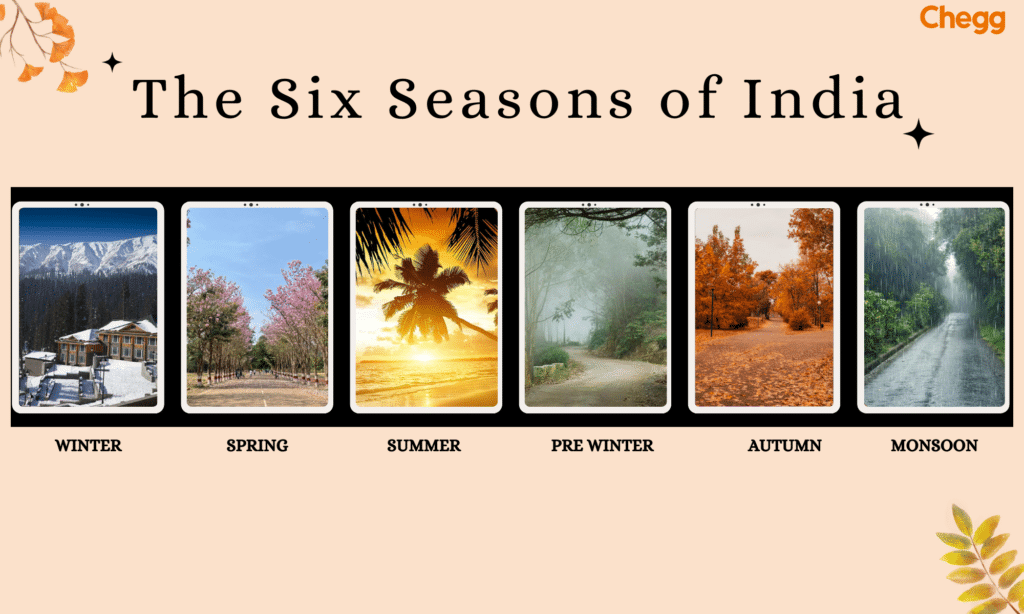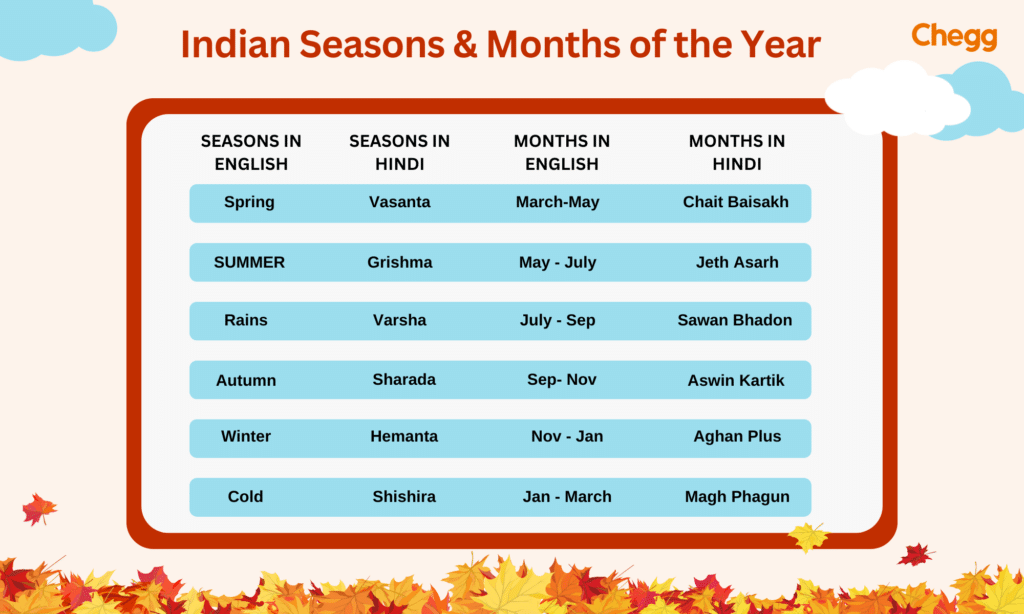
Quick Summary
Table of Contents
The seasons in India are a constant reminder that change is a natural law. They also represent development and progression. According to the ancient Hindu calendar, the twelve months of the year are divided into six seasons, each lasting two months. Occasionally, external variables may cause this timeline to alter.
In India, different seasons impact daily life, cultural practices, the environment, and farming. Ensuring enough water for agriculture, drinking, and other needs is essential. You must be wondering, how many seasons are there in India? This article will discuss the 4 seasons in India with months.
According to the Indian Meteorological Department (IMD), there are 4 seasons in India.
In traditional Indian calendars and cultures, there are six different seasons in India, each lasting around two months. In contrast to the conventional four seasons, these seasons are based on the lunar calendar and are more region-specific. The six seasons in India include Shishir Ritu (Winter), Vasant Ritu (Spring), Grishma Ritu (Summer), Hemant Ritu (Pre-Winter), Sharad Ritu (Autumn), and Varsha Ritu (Monsoon).

In the English language, we designate four distinct seasons, each characterized by unique attributes:
India has 4 main seasons: summer, monsoon, autumn, and winter. The season cycle in India is varied and active because it is a subtropical country. The climate, culture, agriculture, and way of life in the nation are all significantly influenced by these seasons. Here are all the 4 seasons in India with months:
It’s good to know that India has different types of land, such as mountains, plateaus, plains, and coasts. This makes the seasons different in various parts of the country. Coastal areas may have different weather than places with mountains. For example, winters can be longer and more challenging in the Himalayas. So, the kind of land in a place affects how the seasons feel there.
The seasonal cycle is also closely associated with India’s agricultural practices and cultural festivities, making the change of the seasons an essential part of daily life there.

From mid-March to mid-May, it’s springtime in India. The weather becomes nice and warm during this season. It is a season of pleasant weather, emerging flowers, and sprouting trees. After the winter, there is a time of regeneration and rebirth.
From mid-May to mid-July, a very hot summer season in India called Grishma begins. The temperatures can get high during this time. Longer daylight hours and bright skies are its hallmarks, yet occasionally, dust storms can occur in some places.
Most areas of India see significant rainfall during the monsoon season. This time of year is critical for agricultural and water resource replenishment. Strong winds and thunderstorms are frequent occurrences.
After the monsoon, from mid-September to mid-November, it’s autumn. The weather gets better as temperatures start to cool down. It is a favorite period for outdoor activities and festivals because of its milder temperatures, bright skies, and agreeable environment.
Hemanta, especially in northern India, marks the commencement of the winter season when temperatures begin to decrease. Cooler weather is in the forecast, and it could feel like late October in some areas.
Shishir, the brutal winter season, is from mid-January to mid-March. The northern regions, like the plains and Himalayan mountains, experience the coldest temperatures of the year. Winters are cooler in north and central India than in southern India. India’s cold season, winter, is characterized by fewer daylight hours, lower temperatures, and clear skies.

Read More: Exploring the Vibrant Palette of Rainy Season Fruits in India
There are 3 crop seasons in India, and those are as follows:
This rainy season is perfect for crops that love lots of water, like rice, jawar, cotton, and jute.
Following the monsoon, this cooler and drier season is ideal for wheat, barley, peas, and chickpeas that don’t need as much rain.
This short bonus season between Kharif and Rabi crops allows farmers to grow some fast-growing vegetables.
In the world of seasons, there are two main types: meteorological and astronomical.
Meteorological seasons are defined based on the annual temperature cycle and the calendar months, making them easier to understand and apply in weather forecasting and climate studies. These seasons follow the months on the calendar, making it easy for scientists to study weather and climate. They help us understand practical weather observations, comparing climate data across different places and times. It’s like looking at a year in chunks of time, noticing how the weather changes.
These seasons connect with special events like equinoxes, closely tied to Earth’s journey around the Sun. They are important in astronomy, helping astronomers understand celestial events and Earth’s orbit. It’s like looking at seasons from a space perspective, focusing on Earth’s big journey in the solar system. Astronomical seasons are based on the position of the Earth with the Sun and are defined by the equinoxes and solstices. These seasons are determined by the tilt of the Earth’s axis and its orbit around the Sun.
Now, how does this connect with the seasons in India? Meteorological seasons help us observe and understand weather changes practically. Astronomical seasons add a cosmic perspective, connecting with events in space. Together, they give us a complete picture, making sense of the seasons in India, from the ground to the stars above, in a way that’s easy to understand.

India boasts a vibrant tapestry of seasons, each offering a unique experience. Let’s explore some Indian seasons!
The monsoon’s withdrawal can also trigger cyclonic depressions in the Bay of Bengal, particularly on the eastern and southern coasts.
India’s diverse seasons offer something for everyone. From the cool embrace of winter to the vibrant splash of monsoon, each season paints a unique picture!
Seasons play a crucial role in shaping climate patterns on Earth. Climate patterns are the long-term, recurring weather conditions in a particular region. Here’s how seasons influence climate patterns:
India has a monsoon-influenced climate, with the term “monsoon” derived from the Arabic word mausim, meaning a seasonal shift in wind direction. The country experiences four main seasons as classified by the Indian Meteorological Department: summer, monsoon, autumn, and winter. Each season impacts India’s weather, agriculture, and daily life differently.
Summer brings intense heat, monsoon replenishes water sources, autumn transitions with cooler temperatures, and winter brings cold conditions, especially in northern regions. Understanding these seasonal changes helps better plan agriculture, festivals, and daily activities, making climate a crucial aspect of India’s geographical identity.
Read More:
The 6 seasons of India are Shishir Ritu (Winter), Vasant Ritu (Spring), Grishma Ritu (Summer), Hemant Ritu (Pre-Winter), Sharad Ritu (Autumn) and Varsha Ritu (Monsoon).
The 4 seasons in India are Summer (March to June), Monsoon (June to September), Autumn (October to November) and Winter (December to February).
The months and seasons in India are:
1. Summer (March to June)
2. Monsoon (June to September)
3. Autumn (October to November)
4. Winter (December to February)
The 4 seasons in India are Summer, Monsoon, Autumn, and Winter.
The 6 ritu names are Shishir Ritu (Winter), Vasant Ritu (Spring), Grishma Ritu (Summer), Hemant Ritu (Pre-Winter), Sharad Ritu (Autumn) and Varsha Ritu (Monsoon).
The pitta dosha rules the summer season in India. This dosha is associated with the elements of fire and water, resulting in qualities such as heat, moisture, and fluidity, similar to humid weather.

Authored by, Amay Mathur | Senior Editor




Amay Mathur is a business news reporter at Chegg.com. He previously worked for PCMag, Business Insider, The Messenger, and ZDNET as a reporter and copyeditor. His areas of coverage encompass tech, business, strategy, finance, and even space. He is a Columbia University graduate.
Editor's Recommendations
Chegg India does not ask for money to offer any opportunity with the company. We request you to be vigilant before sharing your personal and financial information with any third party. Beware of fraudulent activities claiming affiliation with our company and promising monetary rewards or benefits. Chegg India shall not be responsible for any losses resulting from such activities.
Chegg India does not ask for money to offer any opportunity with the company. We request you to be vigilant before sharing your personal and financial information with any third party. Beware of fraudulent activities claiming affiliation with our company and promising monetary rewards or benefits. Chegg India shall not be responsible for any losses resulting from such activities.